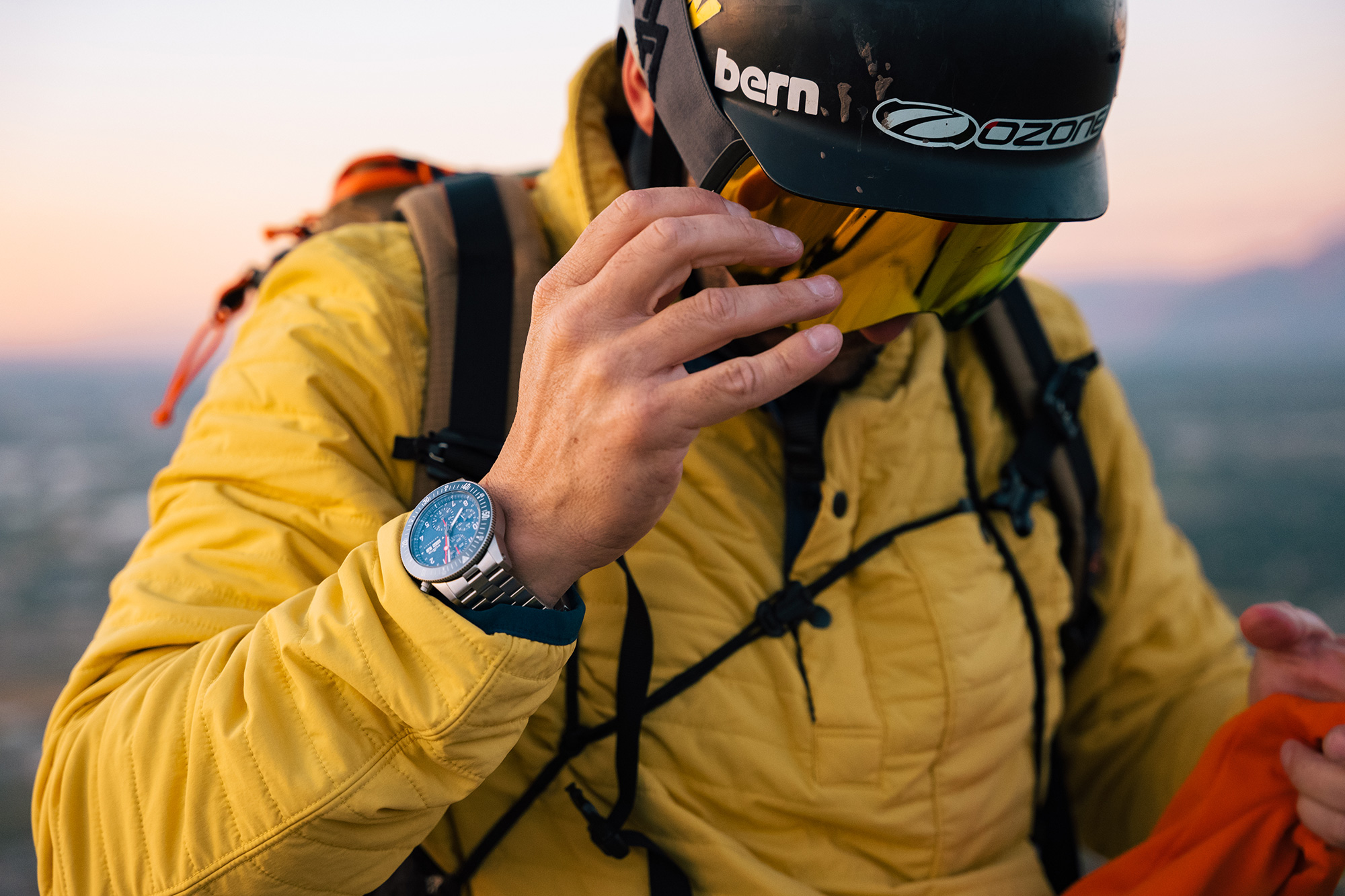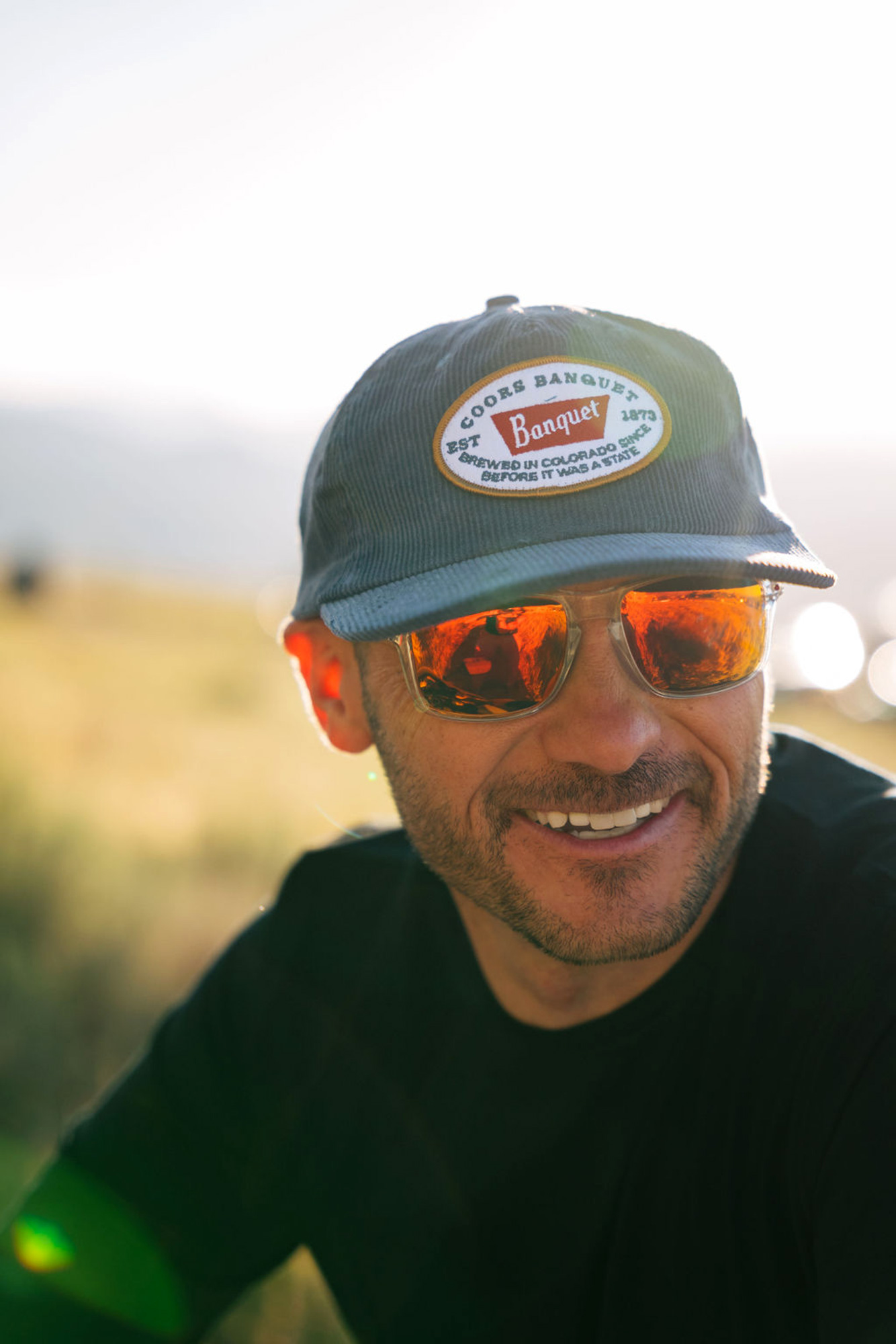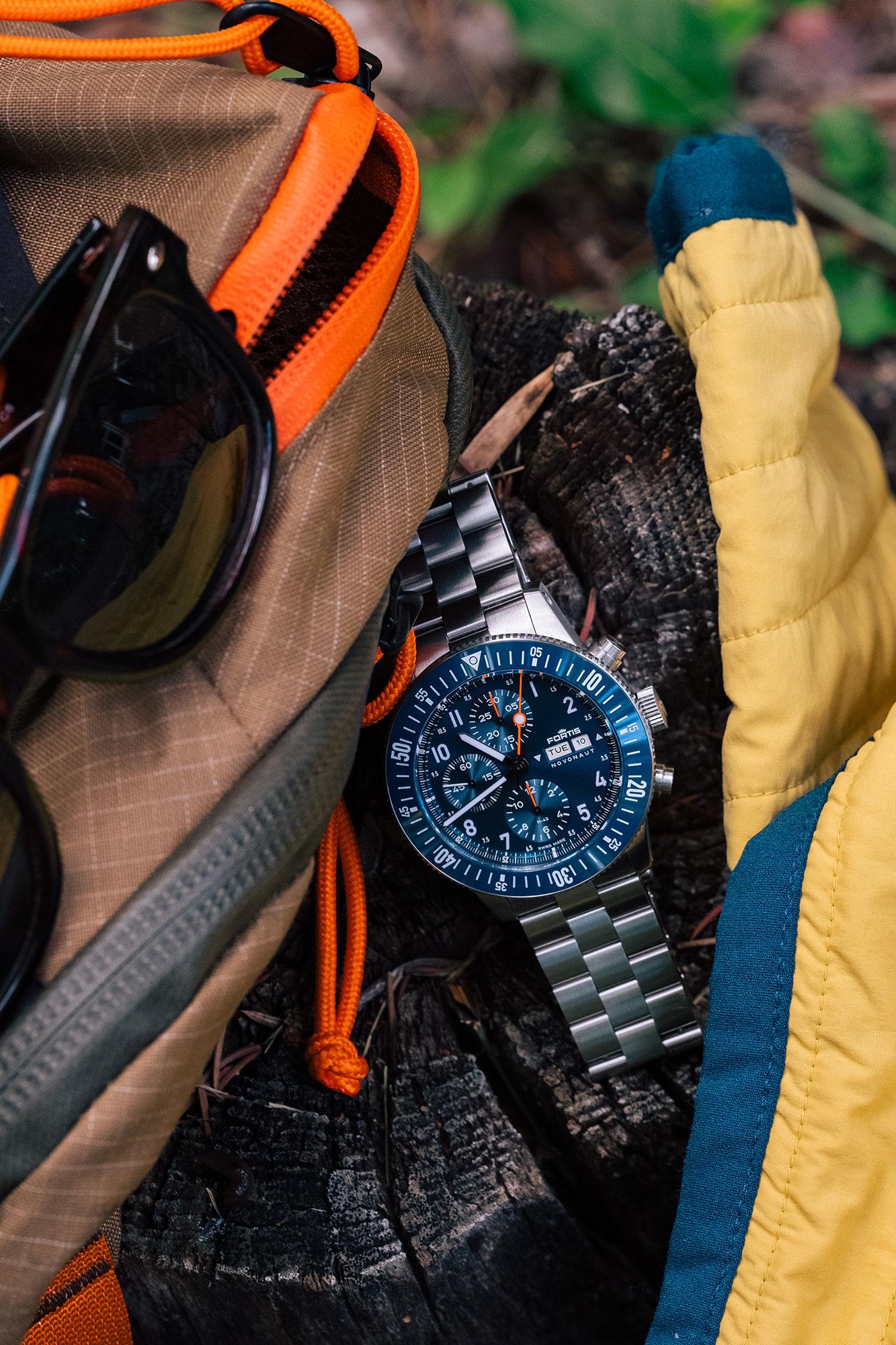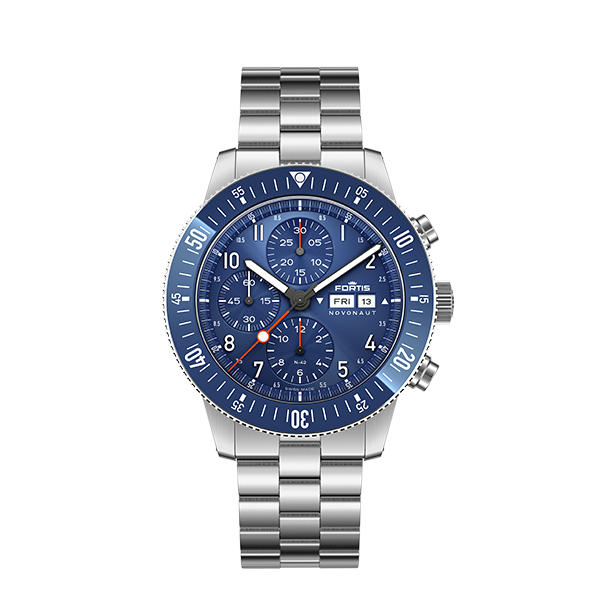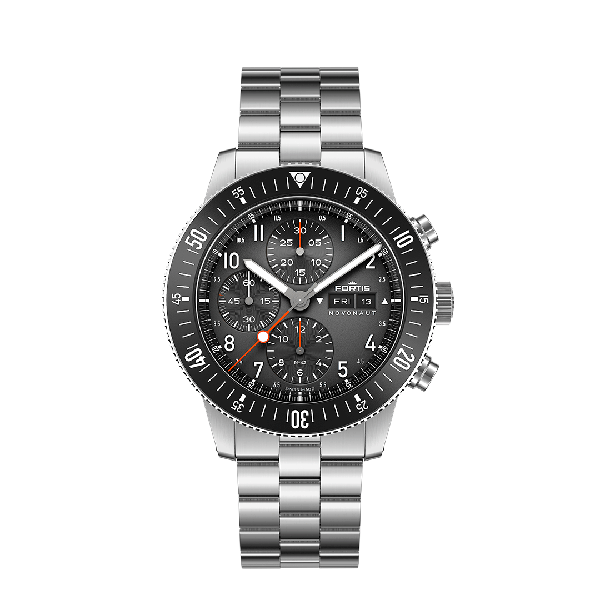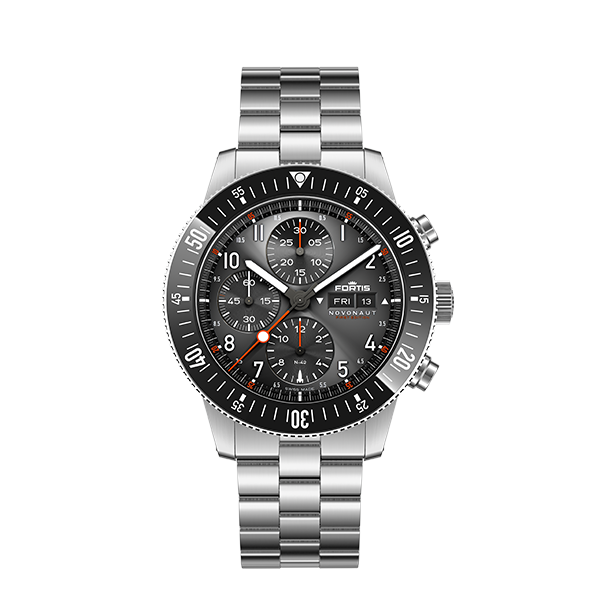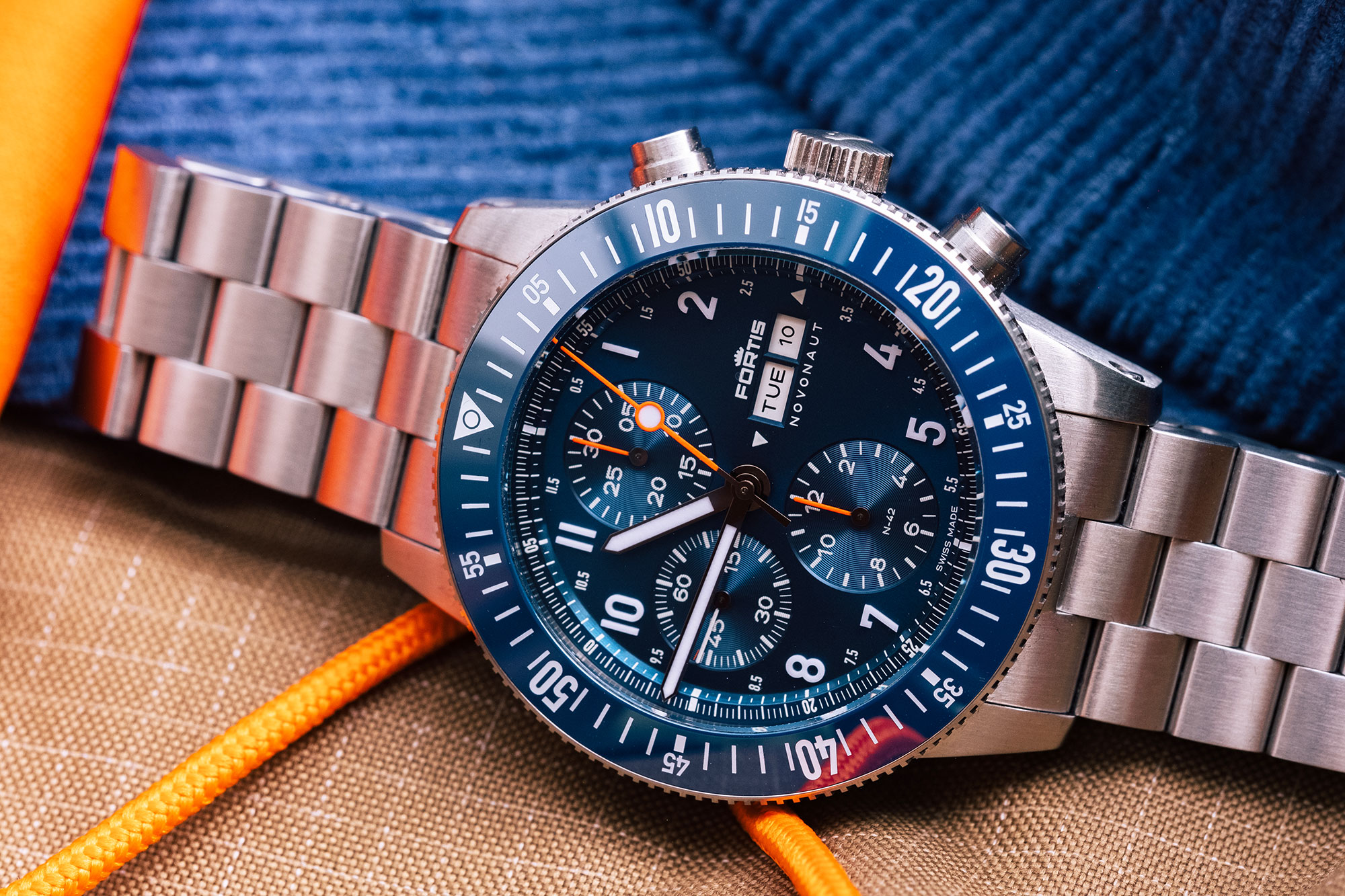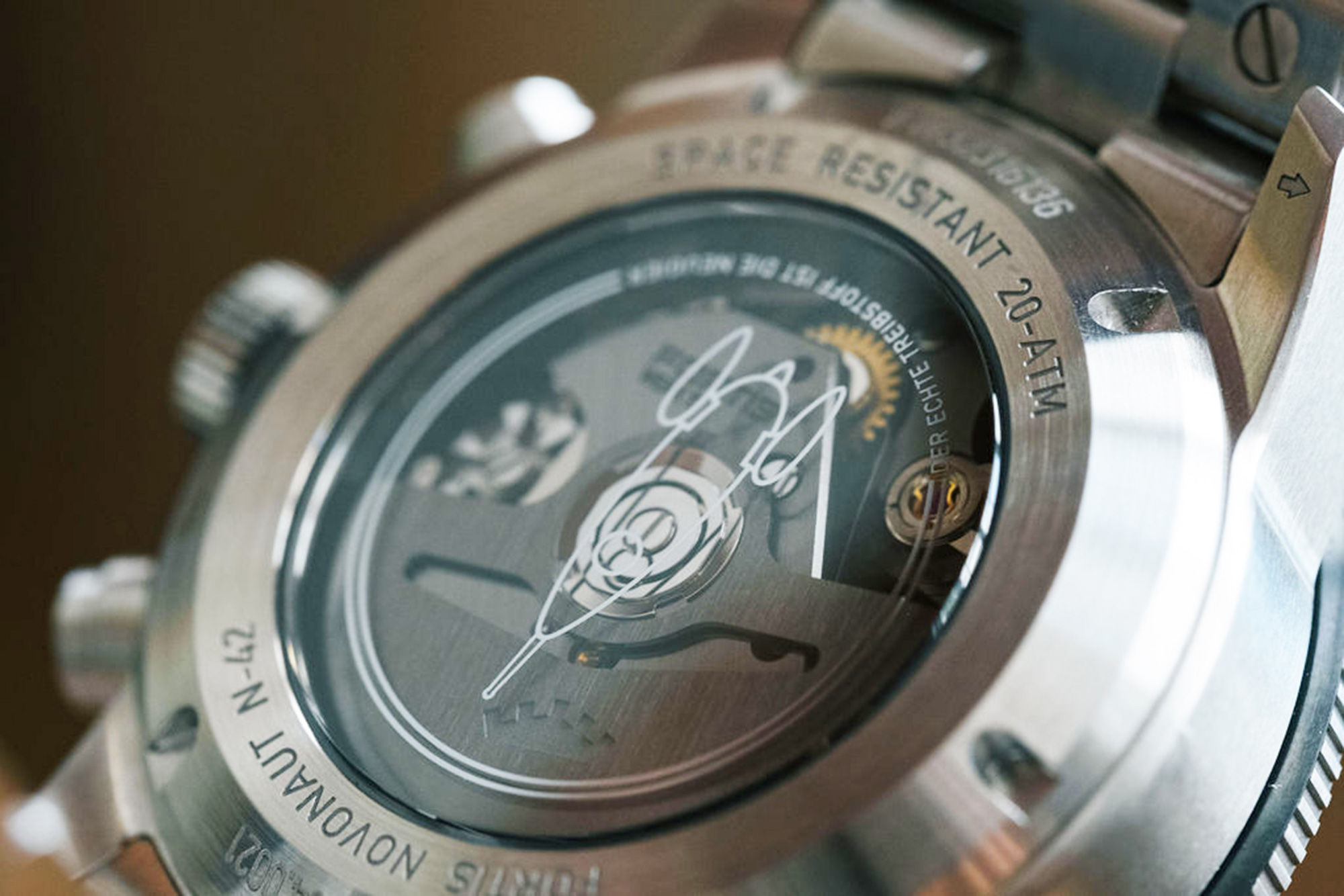
Chances are you’ve heard of hang gliding, and you might have even heard of paragliding. But have you ever heard of speed flying? We spent a day on the side of a mountain in Utah’s Wasatch Front with speed flyer, Tyler Woolstenhulme, and his fast-flying friends, along with the new Novonaut N-42 Cobalt Blue by Fortis. This watch was an effective companion to this adventurer who chases sunrises and sunsets for that ideal air that will send him speeding down a mountainside just feet from the treetops. We caught up with Tyler after this amazing day of passionate pursuit.
Hey Tyler, thanks so much for chatting with us. Tell us a bit about yourself. What do you do for your day job and what are your hobbies and passions?
My name is Tyler Woolstenhulme. I’m originally from Idaho, so I grew up in an outdoorsy state skiing, camping, doing all kinds of outdoor activities. I moved to Utah about 20 years ago where I picked up mountain biking, waterskiing, canyoneering, and… speed flying. For pretty much outdoor activity, I either have the gear or will quickly find the gear for it. For my day job, I work remotely selling software and have the luxury of working where my laptop is. This often affords me the flexibility of being in places that are in close proximity to doing the things that I love.
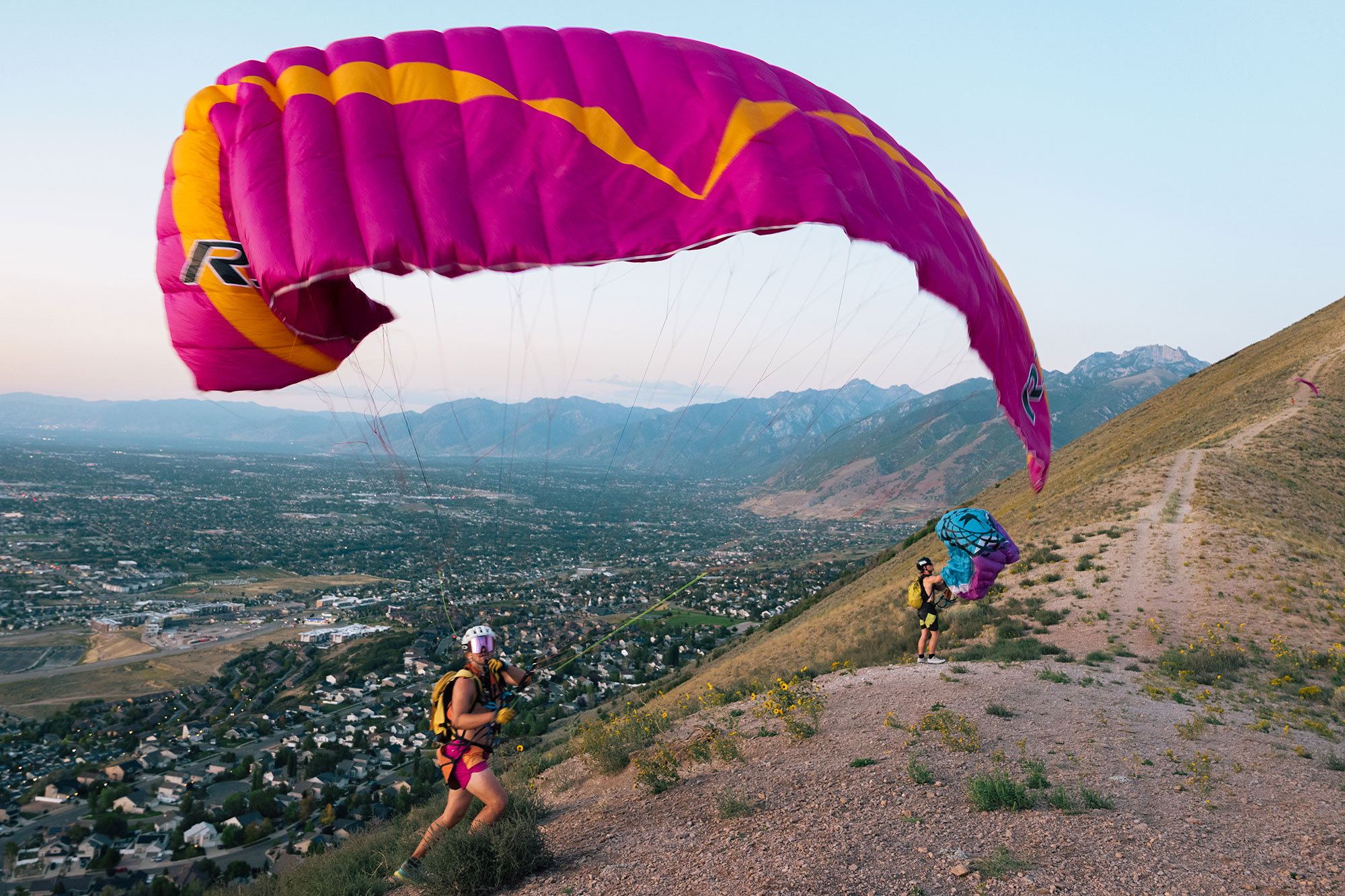
You are a speed flyer, can you tell us a bit about the sport, what makes it different from other canopy-based sports like paragliding, and how you initially got into it?
I started speed flying about 4 years ago. But about 3 years prior to that, I learned to paraglide. Paragliding relies on larger canopies, or what we call ‘wings’, that aim for efficiency and glide and are designed to maximize time in the air. Speed flying has evolved in recent years with smaller, more speed-prone wings that offer stability at higher speeds. So, speed flyers are using wings with an area anywhere from roughly 6 to 11 square meters (the size definition of a speedwing is up for debate), whereas the average paraglider might be 20 to 24 square meters, for example.So the size differential and wing shape in speed flying is designed for adrenaline junkies like me, who love acceleration and descent. You hike up a mountain with everything on your back to a spot with a long, steep runway, and then start running; the adventure is the descent, the proximity to the terrain, and carving turns around the features of the mountain.
You’re based in the state of Utah, what is it about that location, terrain, and weather that makes it so ideal for speed flying?
Utah is ideal for the sport because speed flying requires steep mountains with smooth, consistent wind and, here, we’ve got both. The feeling of flying in these smooth winds is similar to skiing in powder or water skiing on glass. The Wasatch Range runs north to south, so the wind often comes straight up the west face of the range. There’s a particular spot in between Salt Lake County and Utah County where two mountain ranges converge creating north and south faces known as the ‘Point of the Mountain.’ This convergence forms a corridor of very smooth, strong air in both directions creating what’s called the Venturi effect. In the mornings, the wind generally comes from the south allowing you to fly on the south side of the Point, and in the evening, right before sunset, it often comes from north so you can basically fly both sides of the Point making it the ideal place to fly; it is regarded by many as one of the best places to fly in the US with an impressive amount of flyable days.
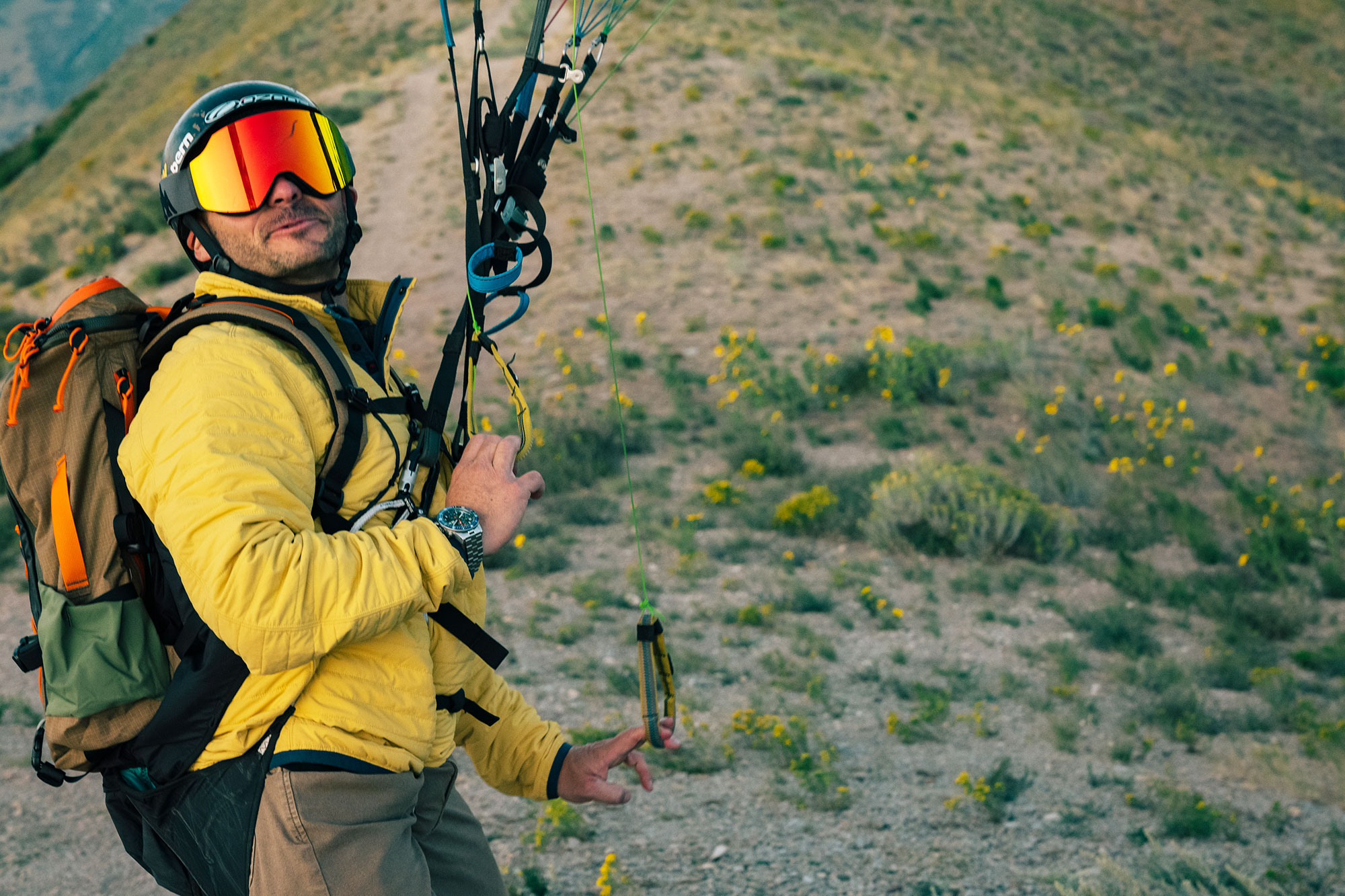
So speed flying is a combination of hiking and backpacking, meets parachuting and hangliding. It seems like a gear intensive sport, can you talk a bit about how important your equipment is in order to safely enjoy a sport like this?
One of the reasons I gravitate toward sports like speed flying is its simplicity. In terms of the necessary gear, all I really need is a harness, a helmet, and a wing and I can fly down a mountain. My pack weighs only a few pounds and I can even bring my entire setup with me on my motorcycle. But there are several nice-to-haves that can enhance the overall experience and for those items, I’m looking for rugged, high-quality gear that incorporate new technologies—like lighter fabric, efficient wing design. When I’m equipped with this gear, I feel more confident doing high-risk sports like this one. Depending on the conditions and temperature, optional gear includes a GoPro, AirPods, a lightweight pack, down pants and jacket, carbon hiking poles, eyewear, a first-aid kit—which should be a necessity—and a watch. In recent flights, I’ve chosen the new Fortis Novonaut because it’s built specifically for both adventure and flying.
Style is a big part of how I choose to represent myself in the air—when you have the right gear and you like the way you look, it affects your mindset which translates into better flying. In speed flying, if you’re under-confident or over-confident, either can increase risk and affect your decision making
As a watch brand, Fortis is all about creating super dependable time telling tools for everyone from everyday folks to full on astronauts. How do watches fit into your speed flying experience?
Time is a critical factor in speed flying. We’re always tracking it and it can seem like an investment that isn’t worth the reward, because you can hike for two hours and only fly for five minutes. But for the few of us who do this out there, the magic of flying is absolutely worth the investment. We’re always racing time. For sunrise flights, we’re racing against thermals, which create turbulence. Thermals are a tool for paragliders, but are not ideal for speed flyers. In the evening we’re racing against the sunset. Once the sun sets, headwinds can switch to tailwinds, again creating conditions that just aren’t ideal. So having a watch on-wrist—that I can instantly glance at while riding my motorcycle to the trailhead or hiking up the face of a mountain, rather than pulling a cell phone out of my pocket—allows me to, as we often say… race the sun.
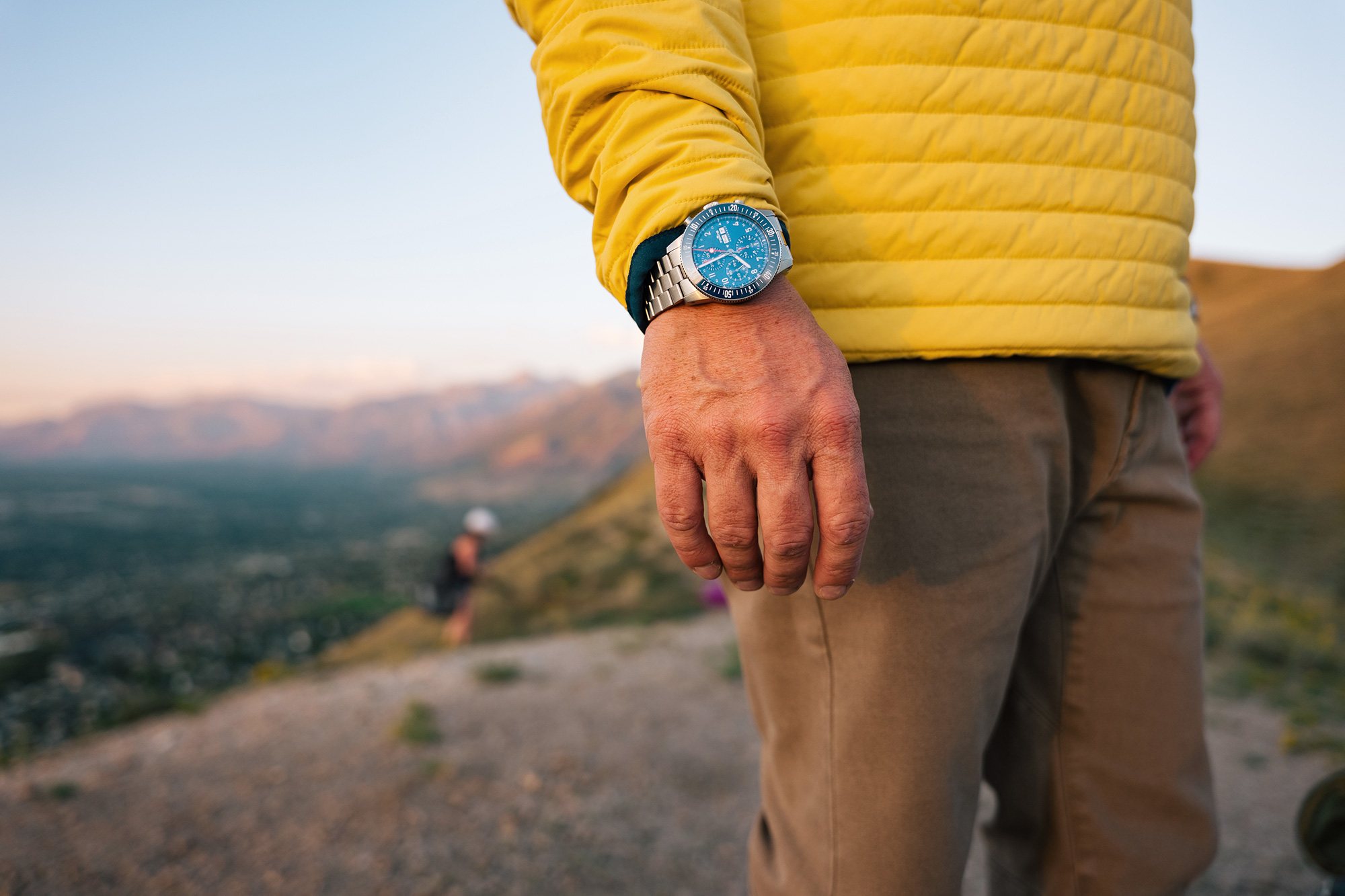
Can you share your impressions of this Fortis Novonaut N-42 Cobalt Blue?
In terms of the Novonaut, like all the gear I use, it’s rugged, matches my style, and is tech-forward. The large chronograph pushers make it ideal for timing flights. And I love the look and feel of the watch. It’s part of that confidence building kit that all speed flyers should use. It’s all about having the right setup. One simple mistake has catastrophic consequences for us, so, in speed flying especially, the better the gear, the better the experience.
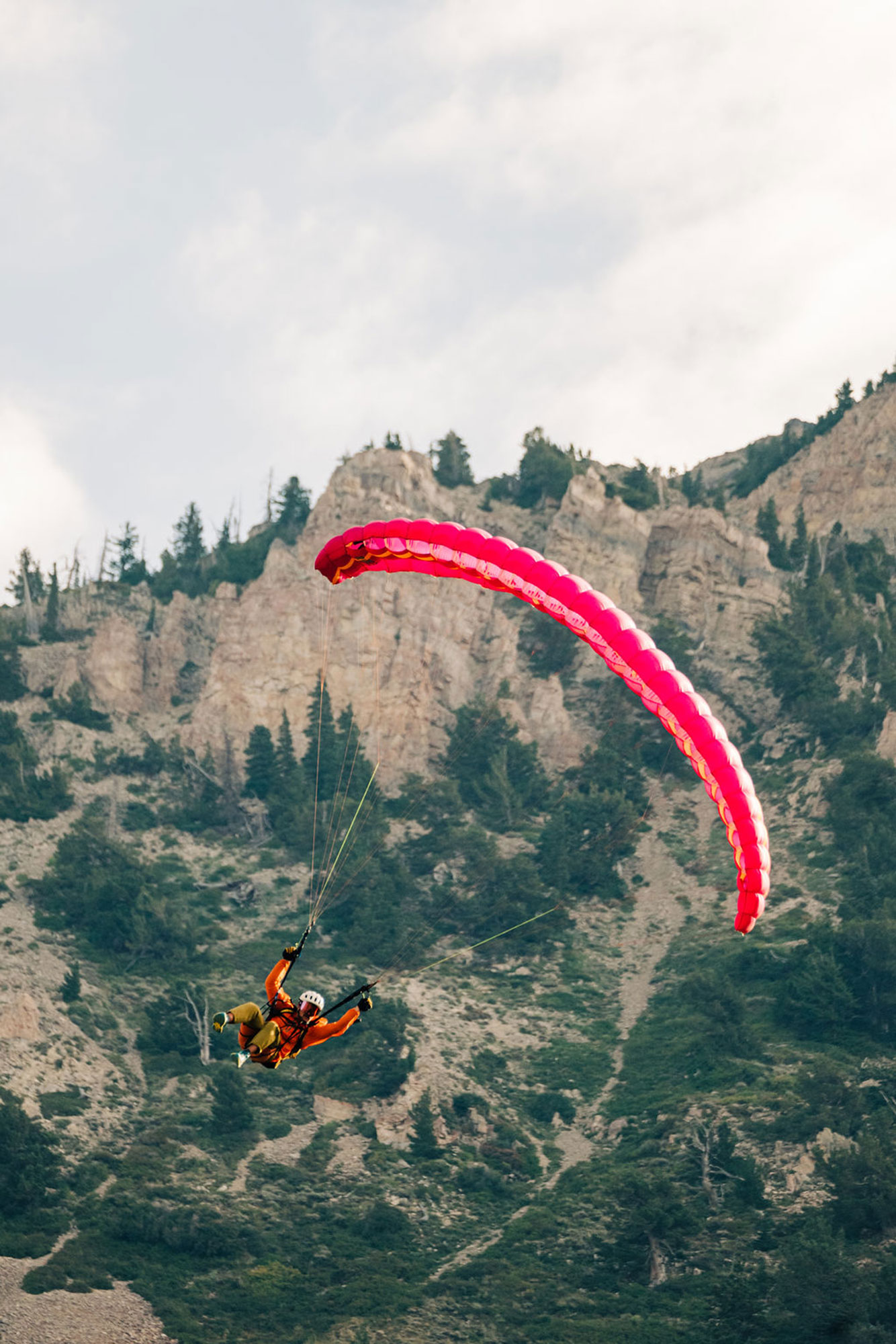
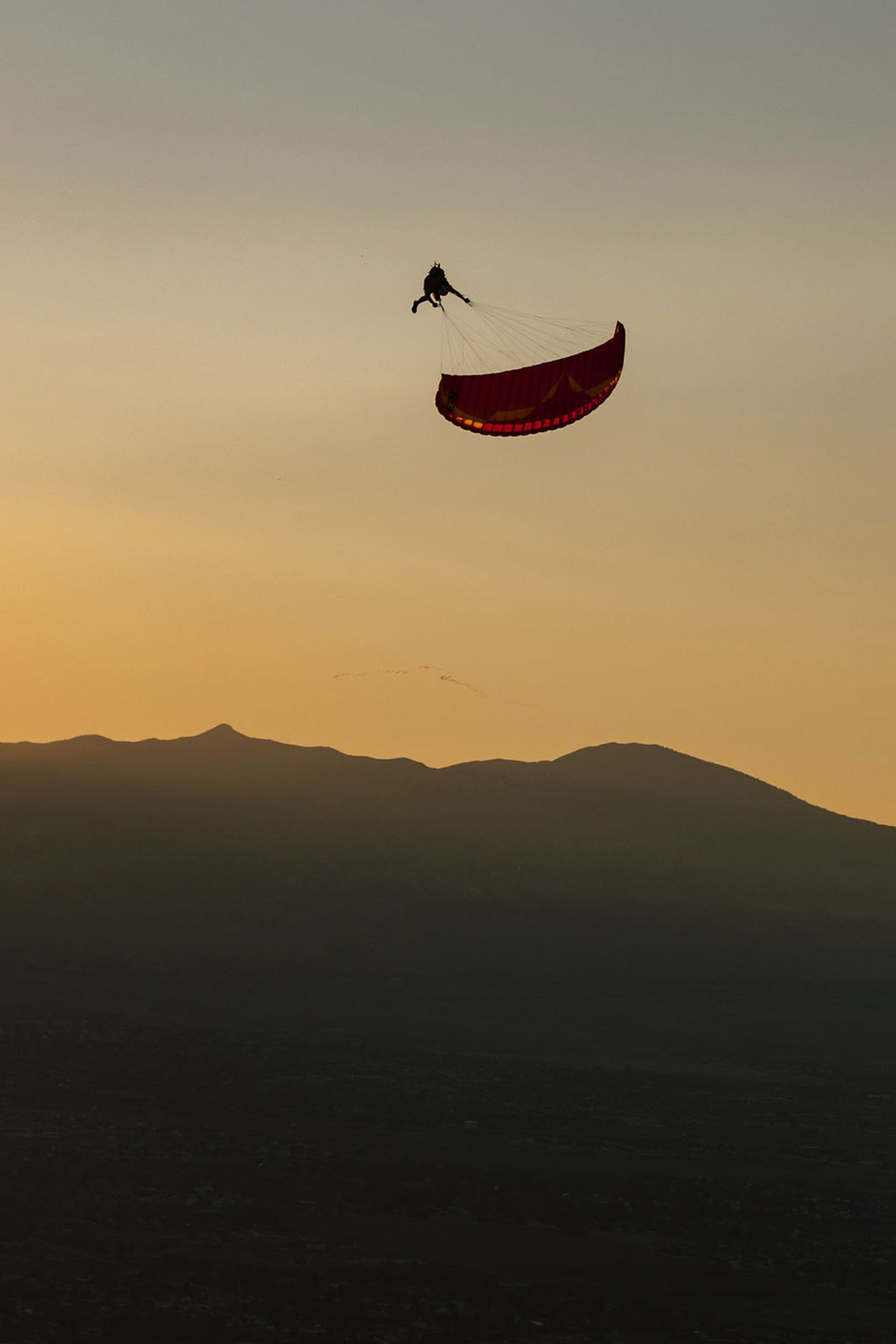
What advice would you give Worn & Wound readers about pursuing their passions?
When someone approaches me about going on an adventure, I like to say, “Buy the tickets, make the plans.” Time is easily the most valuable asset we have, so don’t wait around to try something new. Use creative solutions as an answer to the excuses you give yourself, implement those solutions, and then make it happen. That was my mindset getting into paragliding that then led me to speed flying, and I’ve never looked back.
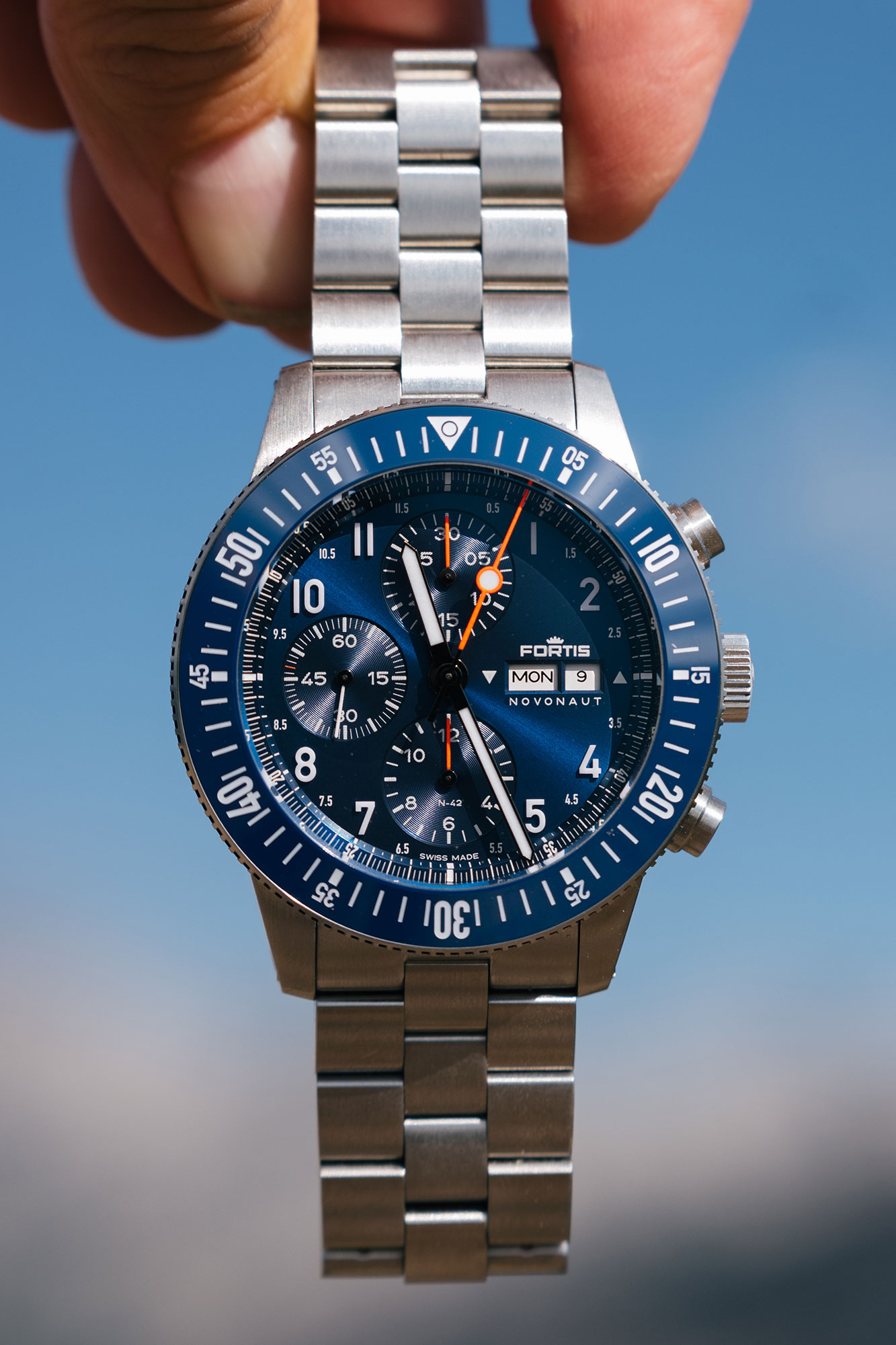
FORTIS NOVONAUT N-42
COBALT BLUE
SPECIFICATIONS
- Case Diameter: 42mm
- Resistance: 200m / 600ft / 20 atm
- Body Material: Recycled Stainless Steel
- Bezel: Ceramic Bi-directional Sirius Bezel™ with SuperLuminova® Inserts
- Glass: Sapphire Crystal with Anti-reflective Coating on Both Sides
- Case Back: Smoked Sapphire with Rocket
- Crown Type: Screw-down Crown with Triple Gasket System
- Block Bracelet: Stainless Steel Block Bracelet with Adjustable Slide Clasp
- Dial: Cobalt Blue Sunburst Finish with Grooved Subdials
- Dial Details: Numerals applied with SuperLuminova® X1 Lumicast, Orange Highlights
- Hands: Luminous Hour and Minute Hands, Stop Second Counting Hand in Berlac Fluor Orange with SuperLuminova® Bull’s Eye
- Movement: WERK 17 Space-tested Self-winding Column Wheel Chronograph with 60 hr Power Reserve
- Complications: Chronograph, Day-Date
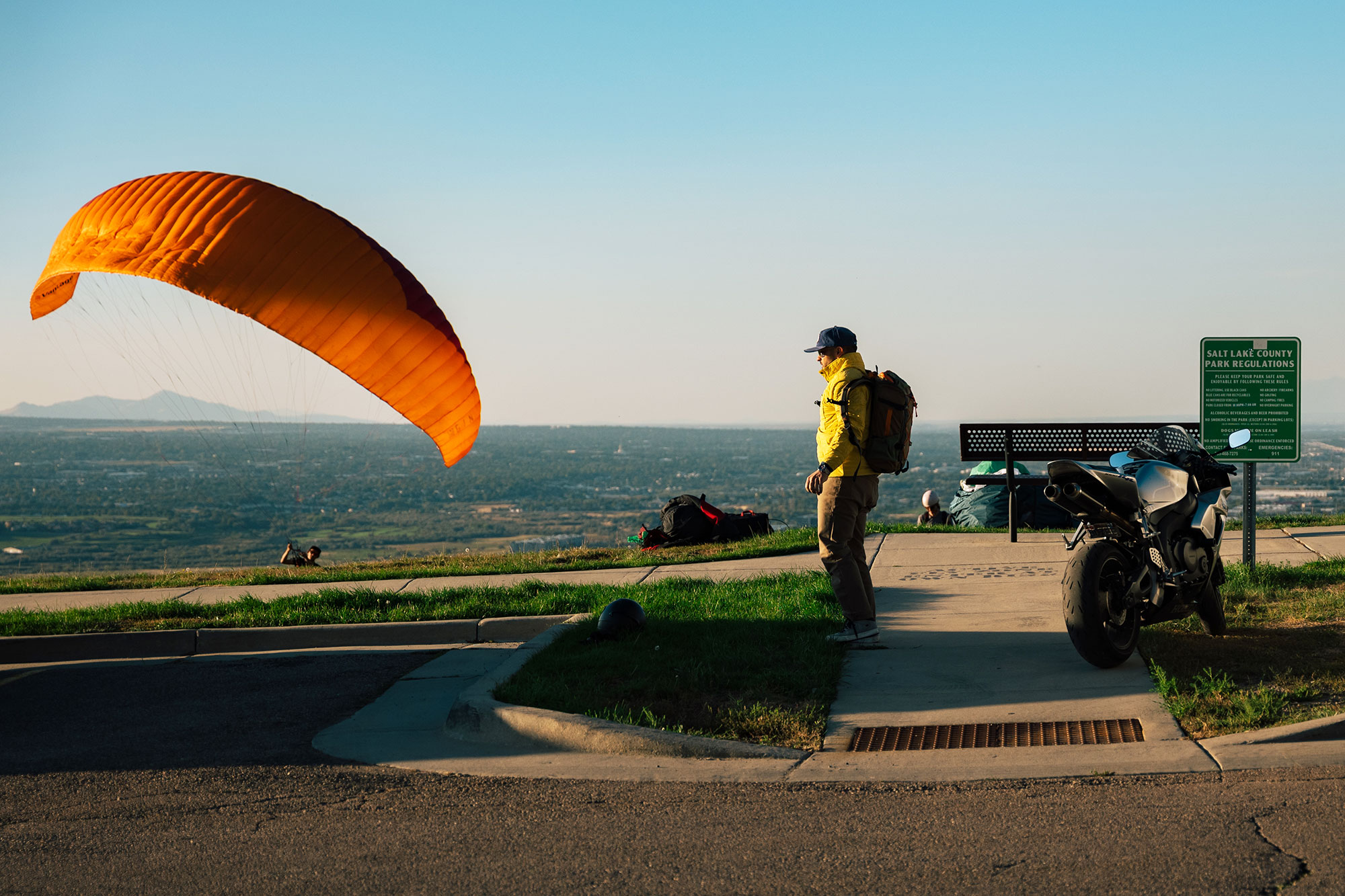









 Featured Videos
Featured Videos





